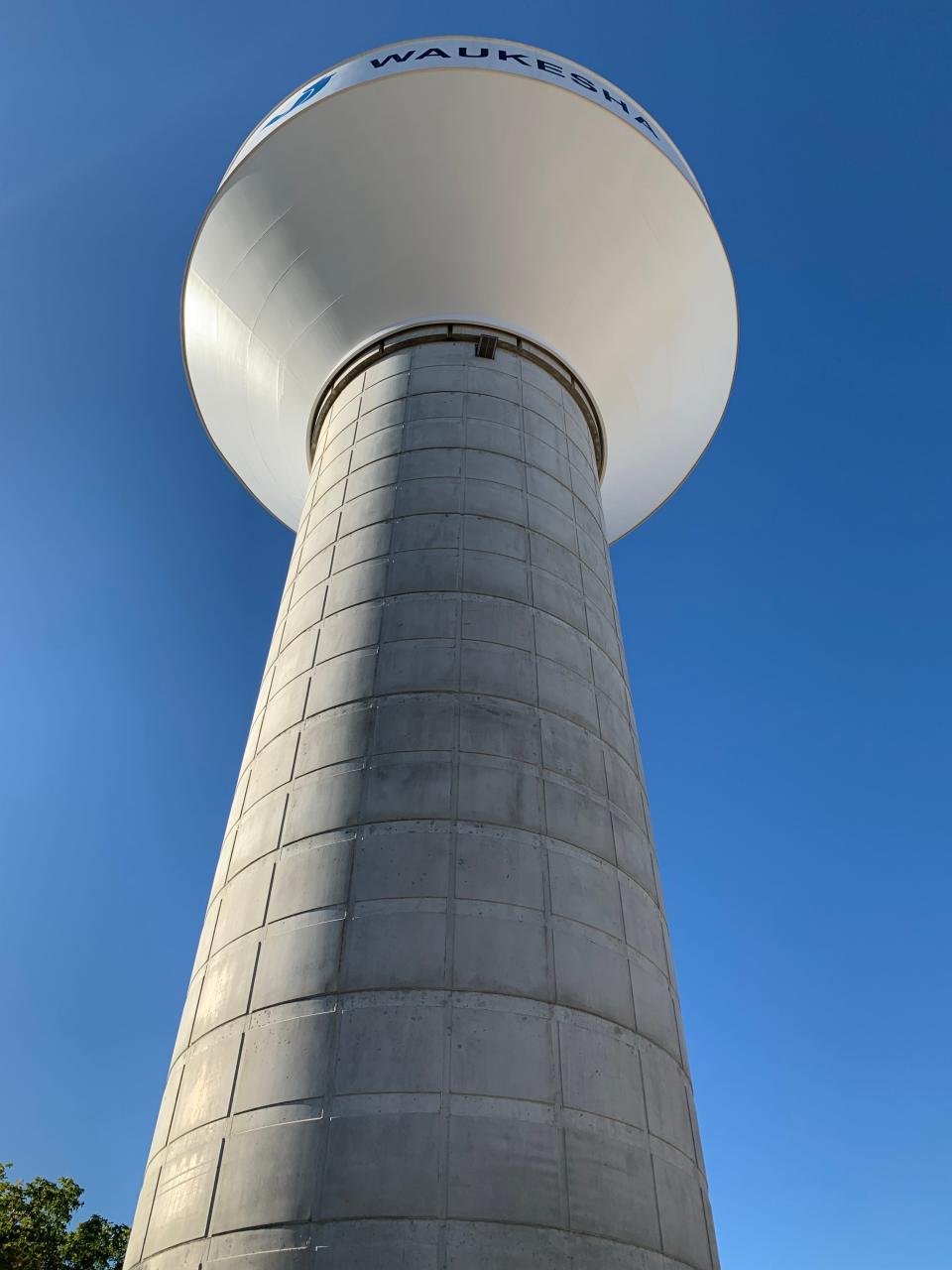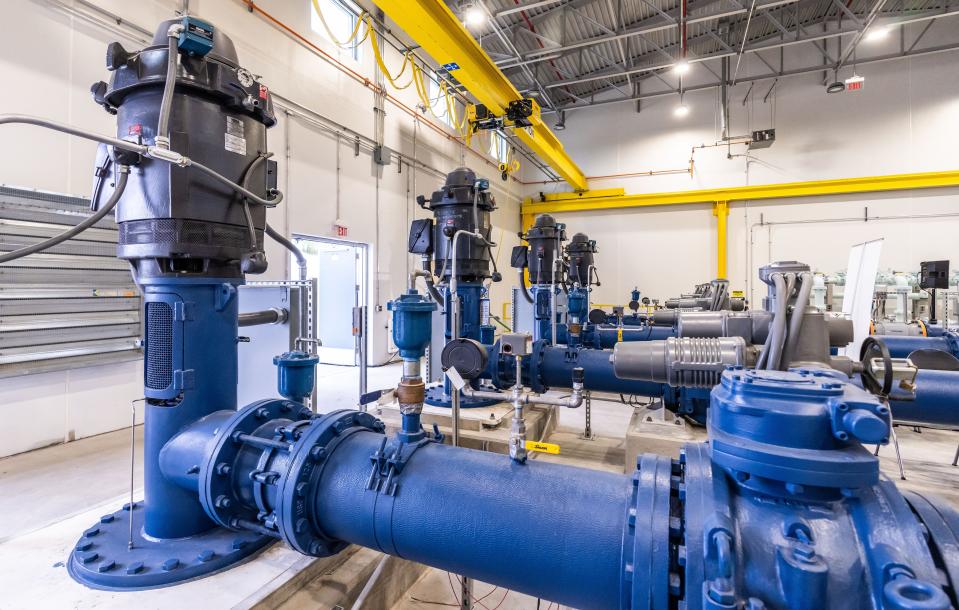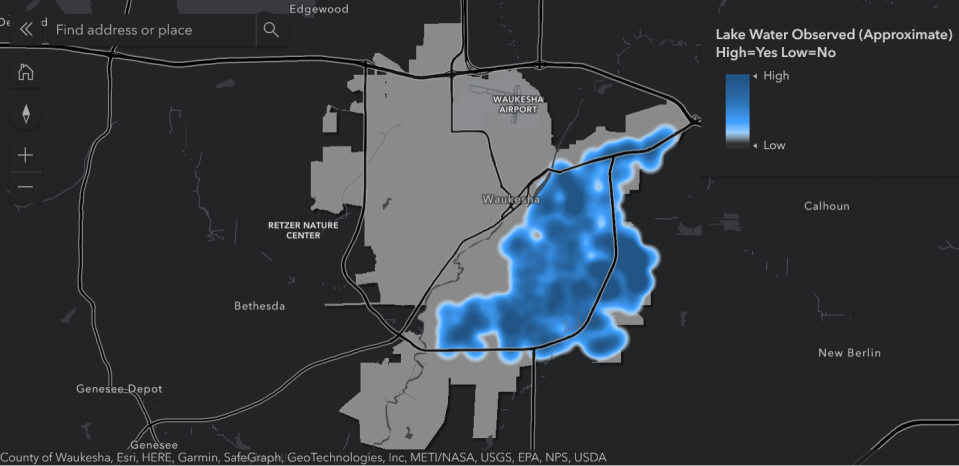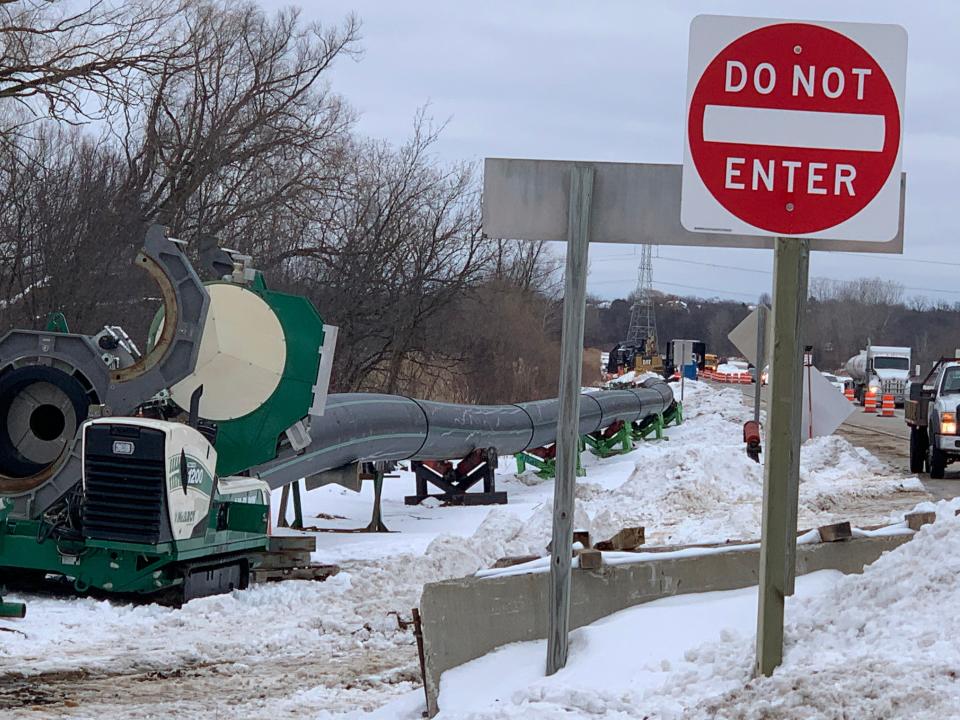Waukesha's new water supply is on its way, and you can track its progress with an interactive map
WAUKESHA - The proverbial pipe wrench has turned, and Lake Michigan's water has begun flowing through the city of Waukesha's precedent-setting new system in a transition that will last anywhere from five to 30 days.
Wondering where the water is right now relative to your home or business? Don't worry, there's a map for that.
City officials spelled out details of the final steps that began Monday, as lake water starts mixing and displacing aquifer water already in the local pipeline.
The process does require some precautions, as Waukesha Water Utility officials have previously spelled out, which is where the map will come in handy.
"The most common request from city residents has been for more certainty about when the water will reach their home or business," Waukesha Mayor Shawn Reilly said in a statement in the days leading up to the transition. "I thank the utility for being responsive to concerns by developing an interactive map. That will help customers track the progress of the lake water through the city."

Here's what you need to know.
The process is like turning on a tap in your home
The water utility will move about 50 million gallons of water through more than 300 miles of water mains over several weeks, starting at the new booster and pumping station along East Broadway on the east side of Waukesha.
According to Dan Duchniak, Waukesha Water Utility's general manager, the elevated storage tanks and reservoirs in the initial pressure zone near the pumping station were lowered and emptied prior to the pumping process that was set to begin at 8 a.m. Monday. While monitoring water quality, and watching as the lake water approaches, utility workers then began filling the tanks and reservoirs.
The pressure would then push the water into that first zone. Workers then opened hydrants at the edges of pressure zones, drawing the water forward, like opening a faucet valve.
It's a process that will be repeated throughout the system.

The water won't look or taste right at first, but will be safe to drink
For several months, Waukesha Water Utility officials have been acknowledging that the transition won't exactly go unnoticed.
The switch in disinfectants (normally added to water supply by the source utility company) will switch from chlorine to chloramine (a chlorine/ammonia mix), resulting in a chlorine taste for a few days. The water will be safe to drink, but it could catch some people off guard. (The emptying and refilling of reservoirs recently are intended to mitigate that issue.)
More problematic is the jostling of solids in the pipelines as the water rushes in, similar to what many experience when water mains are flushed each year. The transition may result in discolored water that could last up to several days. In some cases, it could clog filters or faucet aerators. Again, safe to drink, but it could discolor clothes in the wash.
The city has suggested steps to minimize problems, including temporarily removing filtered attachments and bypassing water softeners and using rust removers to treat washer water, as well as running faucets for a brief time to flush those sediments when they appear.

Map informs everyone about status of water transition
Because those problems will occur at different times as the water rushes in, residents began asking city officials for more precise detail about the transition's timing. The result is an interactive map that's now available on the Waukesha Water Utility website: waukesha-water.com.
You can type your address in the search area at the top of the map to focus on the water's approach or presence in your neighborhood, or you can simply track the water's advance through the entire system. The maps will be updated as utility workers sample water coming from the open hydrants, confirming that lake water is present.
According to utility officials, about 90 percent of the city's pipeline system will have lake water in it within the first five days of the transition. The water will take longer to reach outlying areas and cul de sacs.
As of midday Tuesday, roughly a third of the Waukesha water service area had lake water.
Officials suggest sampling water without softeners
Once the water has filled the system, the use of softeners will be a matter of preference. That's something people have remained unsure about as the pipeline from the lake was being built.
Because utility officials were recommending that all residents bypass their water softeners during the transition, they also suggested that those using softeners try out the new water source for a month to see if the water is soft enough for their preferences.
Those who continue to use the softeners are required to get them reoptimized for the new water supply, which is about 60 percent softer than Waukesha's groundwater.

Project officially complete, for now
The $286 million project, linking Lake Michigan to Waukesha via Milwaukee Water Works through a 36-mile system, is now done, after decades of planning and several years of construction.
Waukesha gained access to the lake water under the "straddling counties" exception, which opened to door to certain communities just outside the lake watershed basin, as part of the Great Lakes Compact. Duchniak noted that the system, as built, is designed for 100 years.
More: Waukesha will soon start pumping in Lake Michigan water. How this man made it happen
Among the less-known elements of the project was the removal of all remaining lead pipes in the system, eliminating another water quality and health concerns.
But, even with a brand new system in place, officials are considering whether a redundant system might be planned in about 50 years, providing not only a backup to the 2023 system but also serving as a replacement once it reaches its century lifespan, Duchniak said.
Information is in plentiful supply
Information on the system is available from the Great Water Alliance and recent and earlier Milwaukee Journal Sentinel articles, which include a string of links to articles dating back a decade on the topic.
The biggest takeaways from that decade of coverage is the fact that Waukesha has now secured a radium-free source of water, meeting a federal mandate and allowing the city to stop using groundwater, which studies have shown is not a sustainable water source for the future.
"After 20 years of studies, permit applications and planning, we are excited to be reaching ourgoal," Reilly said in his statement. "Waukesha will forever have a sustainable supply of drinking water."
Contact Jim Riccioli at (262) 446-6635 or james.riccioli@jrn.com. Follow him on Twitter at @jariccioli.
This article originally appeared on Milwaukee Journal Sentinel: Map tracks Waukesha's Lake Michigan water transition

